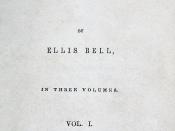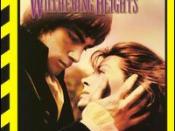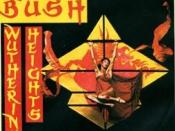The child characters in the books that we have read for this course are, to me, very interesting characters, each possessing different qualities. I found it quite easy to relate to most of the child characters; however, one character which I found it difficult to understand is that of Heathcliff in the novel "Wuthering Heights". Heathcliff is completely different from any other child character in any of the books that I have read for this course. Although he may be similar to them in his isolation, he is completely different psychologically.
From the moment that Heathcliff enters the Earnshaw's home, he is viewed as an outsider. Nobody quite knows what to make of him, and there is a certain element of fear surrounding him. He is not referred to as a human child - when we first meet him in the novel he is referred to as 'it'.
(Wuthering Heights, E. Bronte, Penguin Popular Classics, England, 1994, p45). Mr. Earnshaw, even though he possesses some kind of sympathy and love for this child, describes 'it' as being 'as dark almost as if it came from the devil'. (Wuthering Heights, p.45). He is different to the other children in his physical appearance - described by Nelly Dean as a 'dirty, ragged, black-haired child', and he is also different in the way that he acts and the way that he speaks - 'it only stared round, and repeated over and over again some gibberish that nobody could understand'. (Wuthering Heights, p.45). It is significant to note that Mr. Earnshaw came across this 'gipsy brat' in the streets of Liverpool. At the time in which this novel was written, industrial towns like Liverpool were often compared to hell because they were threatening, dark, miserable and...


